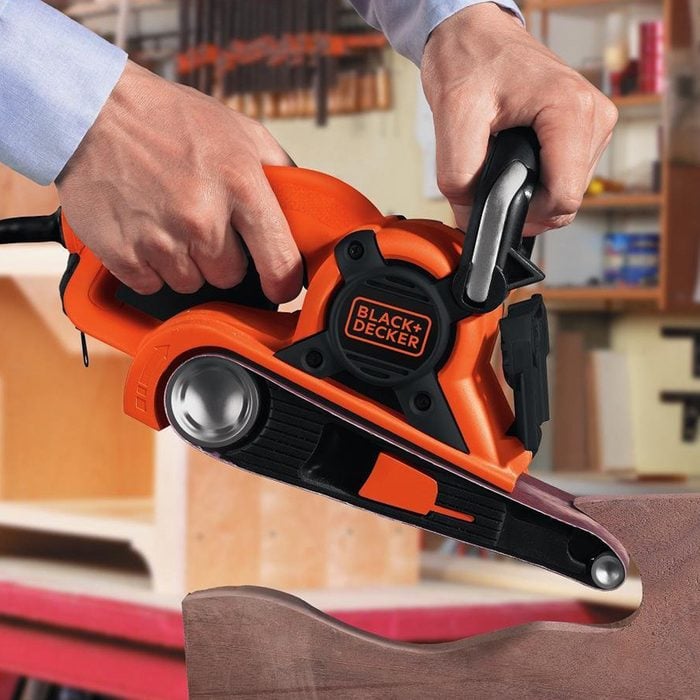
Buying a Belt Sander
Belt sanders are fantastic tools for smoothing, shaping and grinding away materials such as wood and metal.
They provide far more powerful sanding than you could hope to achieve by hand, and they’re even more powerful than most other types of power sanders. The most common mistake new users make with belt sanders is accidentally removing more material than they intended.
Here’s a quick overview of the different styles of belt sanders, and a list of features to consider when making a purchase.
Handheld or bench-top belt sander
If you’re working on a large piece of material, the sander needs to move, so opt for a handheld model. For something smaller, the sander needs to stay while you maneuver the work material, so your best choice is a bench-top model.
There are other styles of belt sanders with specific specialties, such as curved sanders for pipes, or drum sanders for floors. While those sanders do use a belt, they’re not what most people mean by “belt sander.”
Standard handheld or mini-belt sander
Most handheld belt sanders are two-handed tools with the belt beneath the grip to allow slight downward pressure. Mini-belt sanders (sometimes called file sanders) are handheld models with the belt mounted in front of the grip. These tools are great for sanding surfaces a normal belt sander can’t reach, and they usually have narrower belts — an inch wide or less.
Corded or cordless: Bench-top belt sanders are always corded, with some requiring 220-volt electrical service. Corded handheld units are good for a big project or repetitive work. Handheld cordless sanders let you maneuver around an object with ease. There are a few pneumatic sanders on the market, but we have not included them here.
Length and width: Width and circumference of the belt differentiates belt sanders. A 3 x 21 sander would take a belt 3-in. wide and 21-in. around. Wider belts are better for larger material, while narrow belts are good for detailed projects.
Speed settings: Some belt sanders have only one speed, while others have multiple settings. Handheld models may have trigger-sensitive variable speed.
Flush ends: The design of some belt sanders extends past the edge of the sanding belt, which prevents you from getting to the inside edges of corners. Whether this is an issue depends on your project. If you’re flattening a work bench, it won’t matter.
Dust collection: Belt sanders produce a lot of sawdust. They all attempt some dust control, but none are 100 percent effective. Ideally, look for a belt sander with a dust collection port that connects to a shop vacuum or dust extraction system. Even then, plan on spending some time sweeping up after you use it.
Cost: Entry-level handheld sanders are likely to run around $100, but you’ll get much more performance for your investment if you step up to $250 or so. A splurge handheld might run up to $400. Bench-top models range from $100 for entry-level models and up to $800 for a high-quality unit. Splurge bench-top sanders can run into the thousands.
Brushed or brushless Motor: Brushed electric motors are more affordable, but brushless motors last longer and generate less heat.
Additional features: These include trigger locks, pressure indicators and easy belt removal. None are essential to the operation of a belt sander, but they’re always nice to have.
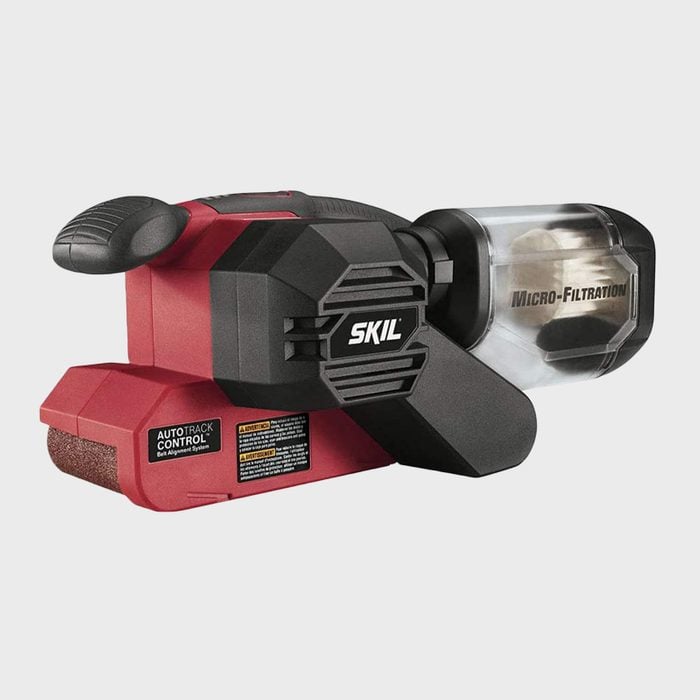 via amazon.com
via amazon.com
Best Budget Handheld Belt Sander
We like the entry-level price on the Skil 7510-01 Belt Sander, along with the pressure-indicator that warns if you’re at risk of removing too much material. The filtration system is a step up from the standard cloth dust collector, and the clear container lets you know when it’s ready to be emptied.
This model is light for a handheld belt sander at only 5-1/2-pounds. That’s good for reducing fatigue, but it also means less aggressive sanding. That may make you press down harder on the sander — another reason that warning light helps!
This belt sander comes with a 3-in. x 18-in., 80-grit sanding belt and a locking trigger to help reduce fatigue. The dust exhaust fits 1-1/4-in. vacuum hoses.
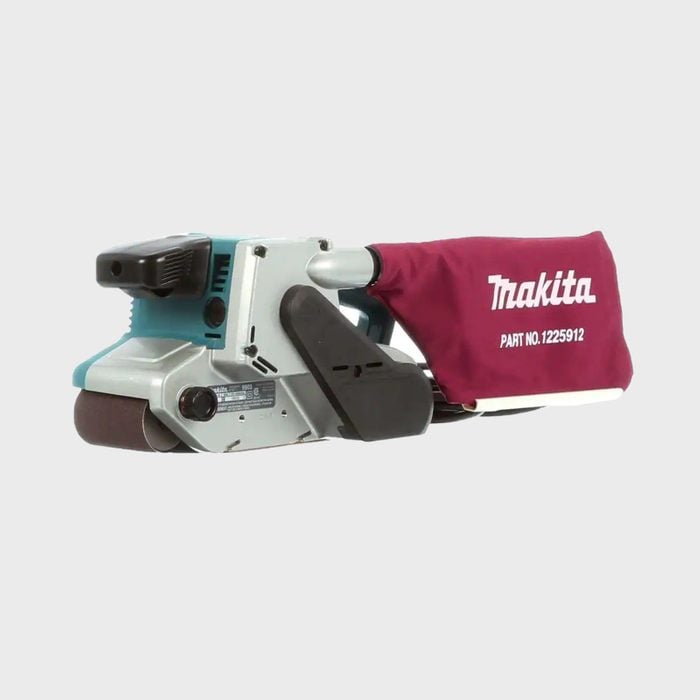 via homedepot.com
via homedepot.com
Best Value Handheld Belt Sander
Makita makes great belt sanders, and the 3-in. x 21-in. 9903 Belt Sander offers value even with the high up-front investment. We’ve seen Makita sanders last 15-plus years with only minor maintenance. We’ve also seen one fall off a truck bed, land on concrete and still work without a hitch, although we don’t suggest replicating this test yourself.
This belt sander offers variable speed, a generous 16-ft.-long power cord and a flush-edge design. It ships with a single 80-grit belt and a one-year warranty.
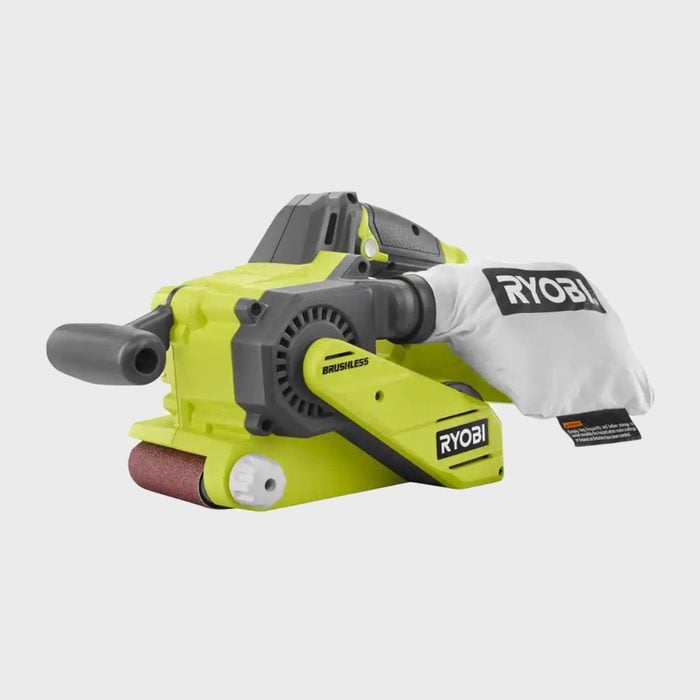 via homedepot.com
via homedepot.com
Best Cordless Handheld Belt Sander
There aren’t many cordless handheld belt sanders on the market, but among that limited stock the Ryobi P450 Belt Sander stands out. It features a brushless motor, an adjustable five-position pommel grip and an 80-grit belt. It’s backed by a three-year warranty.
Note: It doesn’t ship with a battery or charger. That’s fine if if you already have tools in the 18V One+ line, or are looking to bundle a sander with another cordless tool purchase.

Best Corded Mini-Belt Sander
The Tezoro Belt Sander is great for smoothing surfaces in tight quarters. The sanding head can be adjusted 180 degrees, and the light body maneuvers easily.
This mini-belt sander uses a 1/2-in. x 18-in. belt and offers dial-controlled variable speed. It ships with a 36, 40, and 60-grit belt, which is a little coarse for fine sanding. Consider ordering a finer grit belt.
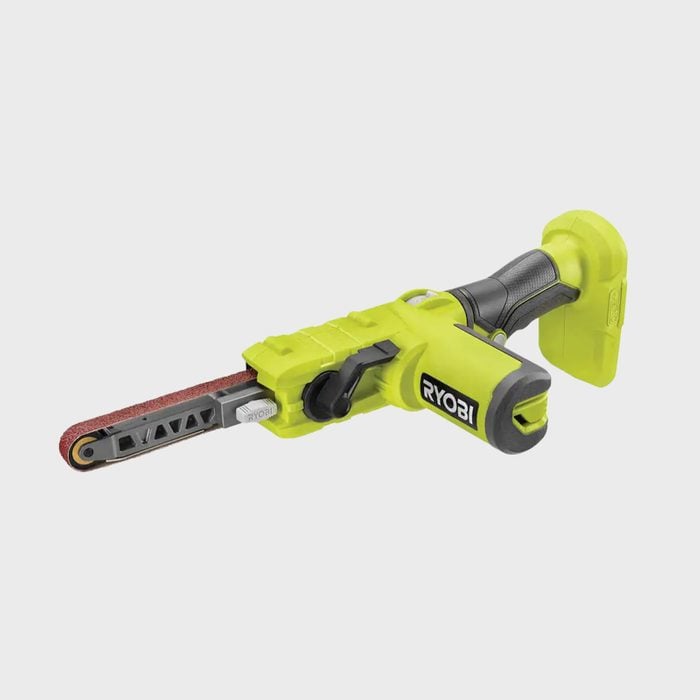 via homedepot.com
via homedepot.com
Best Cordless Mini-Belt Sander
Mini-belt sanders are light and nimble, traits that align well with cordless tools. The Ryobi PSD101B Cordless Mini-Belt Sander works well for detailed smoothing and shaping projects. This 1/2-in. x 18-in. sander comes with a variable-speed dial and ships with three belts (60, 80 and 120 grit).
While available bare tool, it’s also can be bundled with a battery and charger (the PSD101B-PSK005 Chain Saw Bundle). Pair it with the Ryobi P450 cordless handheld belt sander mentioned above.
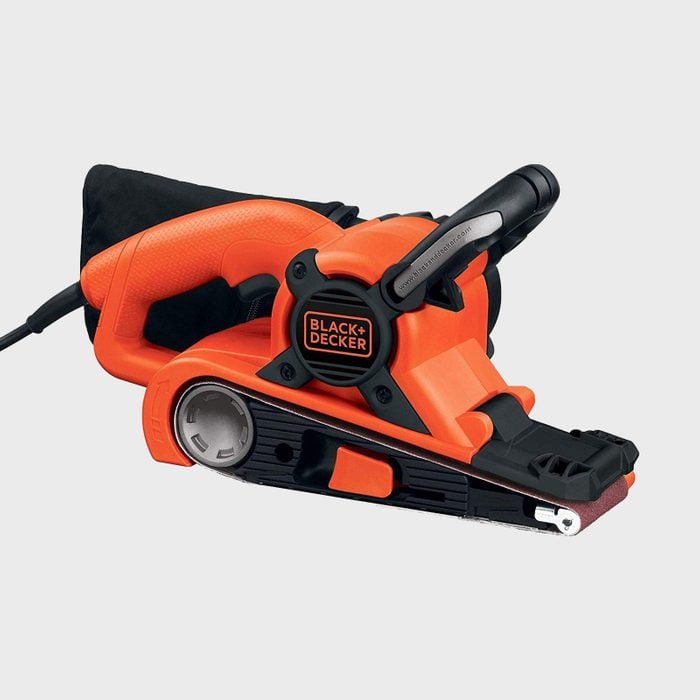 via walmart.com
via walmart.com
Best Traditional/Mini-Belt Sander Hybrid
The Black+Decker Dragster Best Sander is a cross between a handheld belt sander and a file sander. The unusual profile resembles a drag racer (hence the name), and that narrow front wheel lets it get into tight spots.
But Black+Decker took it one step further and added a retractable hood, letting the front function like a short file sander. It’s an ingenious design that results in a more versatile tool. While we love the design, we’re not as crazy about the frame; we wish it was more robustly built. But the wallet-friendly price and clever design earned it a spot on this list.
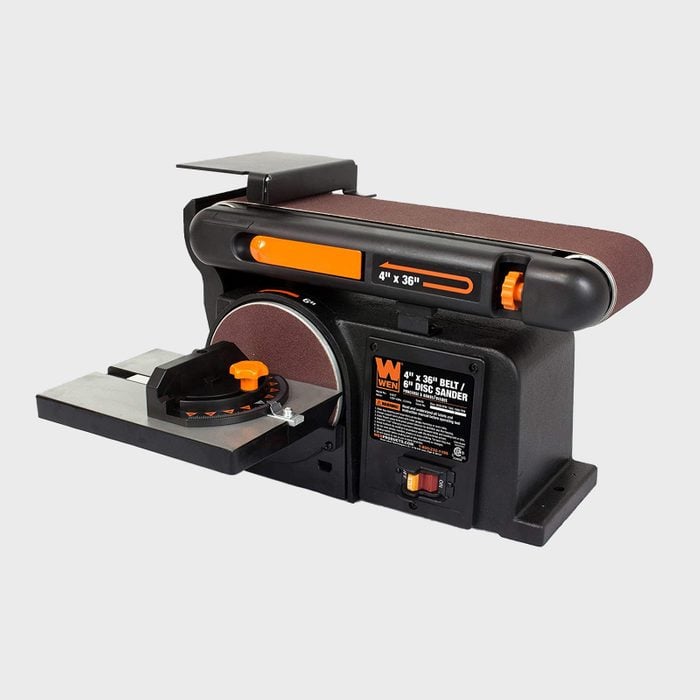 via amazon.com
via amazon.com
Best Budget Bench-Top Belt Sander
Want a versatile, entry-level bench-top belt sander? Take a look at the Wen 4-in. x 36-in. 6502T.
This bench-top model is two tools in one — a belt sander and a six-inch disc sander. The belt sander rotates 90 degrees, allowing for vertical or horizontal work. It has a cast iron base for stability and a cast aluminum work table that can be mounted on the disc sander or the belt sander.
The 1/2-horsepower motor is more powerful than many more expensive models, and there’s a 2-1/4-in. dust extraction port to help keep your workspace clean. And it’s all covered by Wen’s two-year warranty.
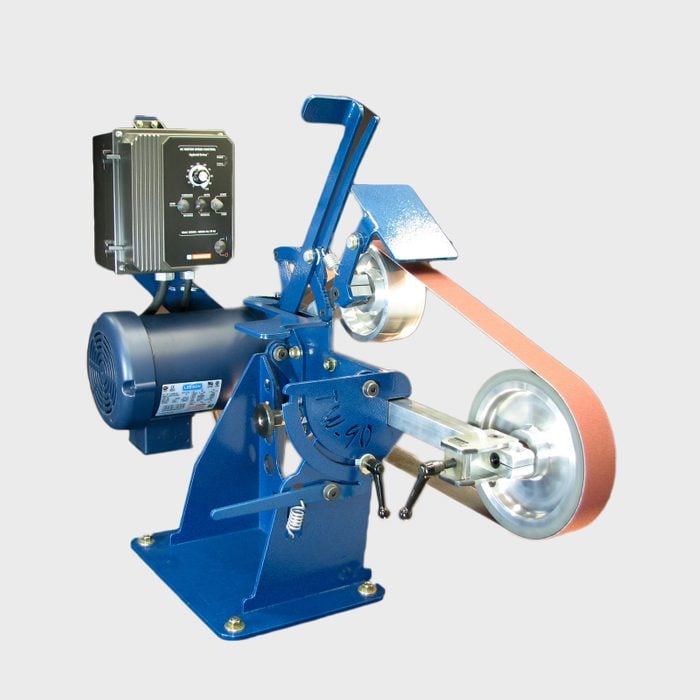 via traviswuertz.com
via traviswuertz.com
Best Splurge Bench-Top Belt Sander
Interested in a true high-end tool? Check out the TW-90 Vertical/Horizontal Bladesmith Package.
Featured on the popular “Forged in Fire” TV show, champion bladesmith Travis Weurtz designed this tool. It offers a laser-cut 1/4-in. steel body, aircraft aluminum wheels and a dual-voltage motor. The latter runs on 110-volts at 1-1/2-hp but kicks up to 2-hp on 220-volt electrical service.
Of course, the $4,000 price means it’s not aimed at DIYers. But if you want a bench-top sander with a bit of Hollywood glamour, this is the tool for you!